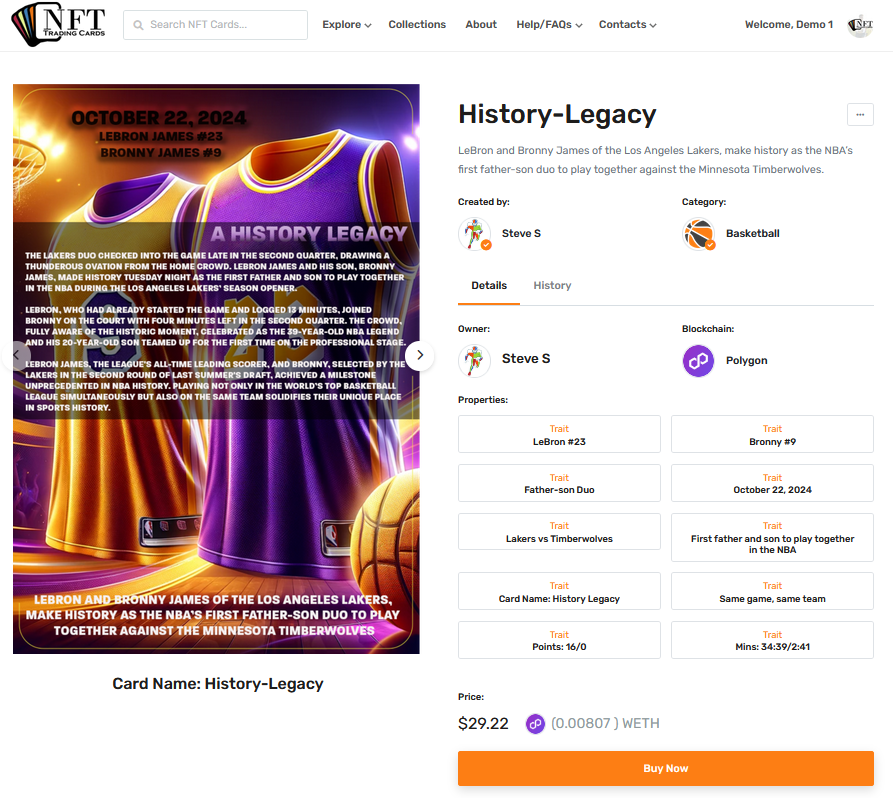Are NFT Trading Cards Killing the Physical Card Market or Saving It?
In a world where digital collectibles are exploding in popularity, NFT trading cards have emerged as a hot new trend — but what does this mean for traditional physical trading cards?
Are NFTs killing the market for cardboard collectibles, or are they breathing new life into an industry that was slowly fading from mainstream attention?
Let’s break down this debate and explore whether NFT trading cards are a threat or a savior to the physical card world.

The Case for NFTs Disrupting Physical Trading Cards
There’s no denying that NFT trading cards have captured the attention (and wallets) of collectors worldwide. Here’s why some people think they might be replacing physical cards:
1. Convenience and Global Reach
- Instant ownership and global access — no need to wait for shipping or deal with damaged goods.
- Collectors can trade, sell, and showcase their NFTs online, 24/7.
2. Proven Authenticity and Security
- Blockchain verification eliminates counterfeits — a major problem in the physical card market.
- Buyers can trace ownership history and confirm rarity.
3. Dynamic and Interactive
- NFT trading cards offer features impossible in physical form, like dynamic art, unlockable content, and evolving stats.
- Cards can change based on real-world events — think of an athlete’s card updating as they break records.
Why NFTs Might Actually Be Saving the Physical Card Market
Surprisingly, NFT trading cards might be doing more good than harm for the overall trading card ecosystem. Here’s why:
1. Renewed Interest in Collectibles
- NFTs are bringing a younger, tech-savvy generation into the world of collectibles — many of whom start exploring physical cards after discovering NFTs.
- Big brands (sports leagues, entertainment, gaming) are using NFTs to rekindle interest in their physical trading cards.
2. Bridging Physical and Digital (Phygital)
- Many projects are now launching “phygital” cards — physical cards tied to NFTs, offering collectors the best of both worlds.
- Owning the NFT could grant access to limited physical editions, making the digital asset a gateway to real-world collectibles.
3. Modernizing the Market
- The success of NFTs is pushing traditional card companies to innovate, introducing better authentication, tracking, and even online marketplaces for physical cards.
- Partnerships between NFT platforms and traditional card makers are expanding the reach of physical cards into new audiences.
The True Future: Coexistence and Collaboration
Instead of thinking about NFTs as a replacement for physical cards, it might be better to see them as a new layer of the collecting experience.
Imagine:
- Owning a physical rookie card with a matching NFT version that gives access to exclusive content, behind-the-scenes footage, or personal messages from the athlete.
- Collectors trading NFTs online while displaying their physical collection at home — one enhancing the other.
Key Takeaways:
| NFT Impact | Physical Card Impact |
|---|---|
| Global, digital-first ownership | Tangible, nostalgic collecting |
| Advanced features (dynamic, interactive) | Classic, tactile experience |
| Blockchain-backed authenticity | Growing demand for better verification |
| Attracts new generation of collectors | Inspires crossover interest in physical |
Conclusion: A New Era for Collectors
So, are NFT trading cards killing the physical card market?
Not quite. In many ways, they’re saving it — by bringing fresh excitement, introducing new technology, and inspiring creative ways to blend the physical and digital worlds.
For collectors, creators, and fans, this is the most exciting time in history to be part of the trading card universe — whether you’re holding a holographic card in your hand or displaying a rare NFT in your digital wallet.
💬 What do you think? Are NFTs a threat to physical cards, or are they the future working together?

Leave a Reply